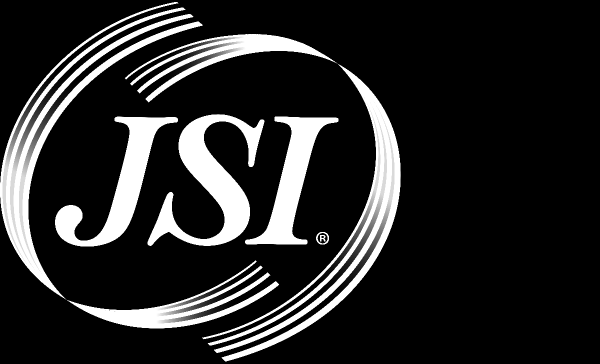
FCC Issues More New Lifeline Rules, Proposes Sweeping Reforms

The FCC voted last week on rules to further reform the Lifeline program, as well as put forth a Notice of Proposed Rulemaking (NPRM) to include broadband services in the program and further combat waste, fraud, and abuse. While the inclusion of broadband is welcomed by most stakeholders, some of the new rules and proposals could be detrimental to rural companies. This e-Lert focuses on the changes that will affect JSI’s clients the most.
Rule Changes
The FCC’s Order includes several changes which will impact small, rural ETCs. The rules will take effect 180 days after the Order and NPRM are published in the Federal Register.
Document Retention: In a 180-degree turn from the 2012 Order, ETCs will be required to retain a Lifeline customer’s proof of eligibility, as well as documentation used to resolve customer disputes in the National Lifeline Accountability Database (NLAD). ETCs will have to establish policies and procedures for protecting this sensitive customer data.
Lifeline Reimbursement: Upon the effective date of the rules, ETCs must use a uniform “snapshot” date – the 1st of the month-to claim Lifeline reimbursements on FCC Form 497. The FCC claims that this will be easier for USAC administratively for audit purposes and when reimbursements are made based on NLAD subscribers rather than FCC Form 497 claims. However, this change will require many companies to revise their billing practices.
Redefinition of Tribal in Oklahoma: Currently for Lifeline purposes, most Lifeline customers in Oklahoma receive enhanced Lifeline support with the exception of those who live in a handful of counties. The FCC has determined that the current definition is too permissive and will revise the Tribal boundaries to reflect the Oklahoma Historical Map. This would exclude a large portion of the upper northwest and a portion of central Oklahoma from enhanced Lifeline reimbursement, including the majority of Oklahoma City.
Proposals Out for Comment
The FCC proposed a number of questions for Lifeline stakeholders to consider in anticipation of further Lifeline reforms. Those questions generally involve how to incorporate broadband into Lifeline, centralize the enrollment process, and create additional program efficiencies. While many were addressed in JSI’s News and Commentary and previous e-lerts, there were a few surprises that could prove unduly burdensome for small ETCs. Below are the questions that JSI clients need to pay attention to and possibly comment on:
Broadband Lifeline: The FCC is moving forward with Lifeline broadband. However, the following questions need to be addressed before the new rules are implemented:
What should the minimum service standards be for broadband Lifeline? Should the FCC require ETCs to offer stand-alone broadband? Is the $9.25 Lifeline monthly support amount sufficient for broadband? Should there be broadband Link Up?
Support Amounts and Eligibility: The FCC is considering keeping $9.25 as the permanent Lifeline discount, but questions remain about the size of the fund as a whole. Specifically, the FCC is seeking feedback on whether a Lifeline cap is appropriate.
The FCC is further seeking comment on whether the eligibility criteria should be modified to reduce the number of households eligible for Lifeline. In addition, the FCC is considering limiting what types of documents could be used to verify eligibility (e.g., such as underlying documentation if the customer’s proof does not have names or photographs).
In regards to Tribal Lifeline and Link Up, the FCC is asking whether the discount amount, eligibility criteria and definition of Tribal lands should be further redefined. For example, should Tribal lands only include remote areas and exclude cities, such as Tulsa, Okla., and Anchorage, Alaska?
Lifeline Administration: No one can argue that administering Lifeline has become increasingly burdensome for small ETCs and will become even more complicated with the implementation of the new rules and proposals above. The FCC is weighing centralizing the Lifeline enrollment process, but the question is how to do so. Should the FCC name a National Lifeline Eligibility Verifier, provide Lifeline customers with a voucher-type benefit, or facilitate coordinated enrollment with existing needs-based programs such as SNAP? If the FCC moves forward with a national verifier, should ETCs be required to pay for that service?
In addition, the FCC is seeking comment on whether NLAD should replace the Form 497 for Lifeline reimbursements. Moreover, it is assessing whether ETCs should pay to use NLAD’s TPIV function, which is a required to enroll customers in Lifeline. It is also determining whether there should be national enrollment and recertification forms and if it should require officers to certify that its staff has received adequate Lifeline training.
The FCC also has asked for comments on whether it should require ETCs to make available a 24-hour customer service number for those customers who want to de-enroll from Lifeline.
Finally, as the FCC considers ways to strengthen the program that could unduly burden small ETCs, they seek comment on under what circumstances an ETC should be able to opt-out of providing Lifeline.
Comments will be due 30 days after the Order and NPRM are published in the Federal Register and reply comments will be due 30 days after that.
For information about Lifeline, you can contact Lans Chase at 770-569-2105.
Source: Source Email




